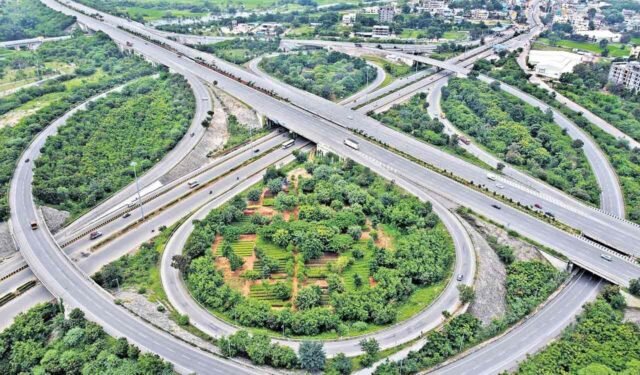Hyderabad: As many as 9,292 acres of idle industrial land within or near the Outer Ring Road have been cleared by the Telangana government to be developed into multi-use zones for residential, commercial and IT development.
The Telangana government has approved the Hyderabad Industrial Lands Transformation Policy (HILTP), aimed to provide the much-needed economic boost to the state.
However, the Opposition, Bharat Rashtra Samithi (BRS), has labelled the policy as a colossal land scam.
Rs 5,000 crore as revenue target
The HILTP targets industrial estates that have become economically unviable due to rapid urbanisation, old technologies or pollution concerns. Conversion is permitted through a one-time Development Impact Fee (DIF) levied on the landowner.
Total land area: 9292 acres, including 4,740 acres of plotted lands
Conversion fees: 30 per cent and 50 per cent of the sub-registrar office value for the plots on roads less than 80 feet wide.
Significantly, the government has committed to ring-fencing 25 per cent of the revenue generated from the policy to develop new industrial parks and infrastructure beyond the ORR, promoting decentralised growth. The estimated revenue from the conversion is projected to be between Rs 4,000 crore and Rs 5,000 crore.
Major industrial estates
This transformation policy primarily targets decades-old industrial clusters that are now deep within the urban fabric.
Major industrial estates that are now eligible for multi-use conversion include:
Balanagar
Jeedimetla
Sanathnagar
Kukatpally
Katedan
Uppal
Nacharam
Moula Ali
Cherlapally
Kushaiguda
Azamabad
Patancheru
Ramachandrapuram
These locations, once on the city’s outskirts, are now high-value, strategically important zones ideal for much-needed residential, commercial and IT infrastructure.
Many old units shut down due to pollution
The HILTP is a response to the logistical and environmental problems posed by having large, often polluting, industrial zones in the heart of a megacity.
For decades, estates like Jeedimetla and Balanagar have seen many units shut down or relocate under government directives to reduce pollution. This has left thousands of acres of land, acquired at subsidised rates long ago, unutilised and economically locked, while the city struggles to meet the booming demand for real estate.
The government said that the conversion is a financial manoeuvre to unlock this asset value, generate State revenue, and repurpose the land for modern urban needs.
Allegations of a ‘Rs 5 lakh crore scam’
The policy has been met with immediate and explosive criticism from the BRS.
BRS working president KT Rama Rao (KTR) has accused the Congress government of orchestrating a Rs 5 lakh crore land scam. His key allegations center on the valuation and speed of the policy:
1. Undervaluation: KTR argued that the government is allowing conversion for a mere 30 to 50 per cent of the SRO value, which he claims is already four to five times lower than the true open market value of these prime lands (estimated at Rs 40 to Rs 50 crore per acre). He alleged that this undervaluation is a deliberate mechanism to illegally benefit politically connected real estate groups.
2. Speed and motive: The BRS questioned the 14-day approval timeline and the six-month sunset clause, suggesting undue haste to finalise deals with pre-selected beneficiaries.
3. Public land for private gain: KTR reminded the public that these lands were originally acquired at subsidised rates for the public good (employment/industry) and demanded that the government reclaim 50 per cent of the land for public welfare before auctioning the rest to maximise public revenue.
The BRS has demanded an immediate Assembly session to debate the HILTP and issued a stern warning to potential buyers that a future BRS government would reverse the regularisation and initiate legal action.
Not sale of govt land, freeing economically locked land: Sridhar Babu
In defence of the government’s plan, Industries Minister D Sridhar Babu dismissed the allegations, asserting that the policy only facilitates conversion for freehold land already owned by industrial management and is not a sale of government land.
Sridhar Babu said that instead of reiterating what he described as an ‘old and unfounded narrative,’ the BRS leadership must first explain the rationale behind the freehold GOs (19, 20, 21) issued by the previous government in August 2023, and the ‘significant financial implications running into several lakh crore rupees’ associated with them.
Observing that such allegations were unexpected from senior leaders with long administrative experience, the minister said that while the present government is working transparently to mobilise Rs 4,000–Rs 5,000 crore of legitimate revenue for the State, those ‘accustomed to opaque practices’ were finding it difficult to accept this approach.






